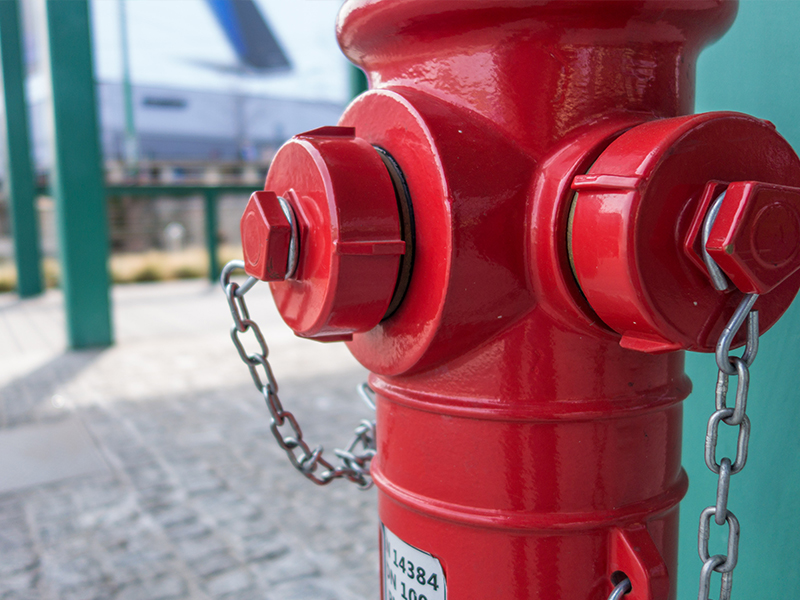5 Reasons to Inspect a Fire Hydrant
1. To Verify the Safety of the Hydrant
We begin by performing a check to ensure safe operation of the fire hydrant while inspecting the orientation of the hydrant. Safety issues prevent the fire hydrant from pressurizing and/or proper operation. Common safety issues include: hydrants with severe leaks as well as hydrants with missing parts or parts in need of repair/replacement, severely rusted flange bolts, broken stem and flange couplings from vehicle impacts, and loose nozzles in need of re-caulking.
2. To Assure Fire Fighting Capability
We perform a pressure and flow test of each fire hydrant in your system. Upon flow testing each fire hydrant we determine issues which may interfere with the firefighting capabilities. Such issues include: seized operating nuts, seized hose and pumper caps, low flow due to partially closed valves, hydrants in severe need of grease and/or oil and fire hydrant accessibility.
3. To Test the Distribution of A System
All fire hydrants must be flow tested. This will provide pressures and flow data in all areas of your system. Areas with significantly lower flow may hint at partially closed valves. The only way to verify that your system is functioning at its full potential is to flow test each fire hydrant!
4. Flushing The Mains
Removes sediment, rust, and debris from your lines while restoring disinfectant residuals.
5. Avoid Liability Issues
Annually inspecting each fire hydrant in your system can help avoid liability issues. If a hydrant is in severe need of repairs or replacement, you can be notified immediately in order to prevent liability issues which may happen when fire hydrants are ignored or looked over. Avoid liability by putting forth the effort to ensure the safety of your residents and their property.
Everyone should contribute to preventing loss of life and property one fire hydrant at a time because,
“Disasters can occur anywhere, and they often occur when we least expect them. NFPA® codes and standards are there to provide us with ways to prevent their occurrence, manage their impact, and protect us.”
All fire hydrants are to be inspected annually. Don’t wait for the Fire Marshall to contact you, contact us for hydrant flow testing and safety inspections.

